|
SCOPE OF INQUIRY
Concerned by frequent and serious reports
of hunger in Burma, the Asian Human Rights Commission (AHRC)
invited us to sit as members of the People’s Tribunal on
Food Scarcity and Militarization in Burma, and requested us
to hold an inquiry. We are aware that there is military
dictatorship in Burma, that there have been human rights
violations throughout the country, and that such violations
continue even today. However, in this inquiry we are not
concerned with all such abuse. We are mainly concerned with
whether the right to food has been denied to people in Burma,
and if so whether this denial owes to a militarization of
Burmese society.
This section presents the terms and
concepts basic to our inquiry. It also summarizes the history
of food production and military rule provided us by AHRC.
 The Right to Food The Right to Food 
The right to food is
recognized by both the Universal Declaration of Human Rights
and the International Covenant on Economic, Social and
Cultural Rights, passed by the UN in 1966 (ICESCR). Article
25(1) of the Universal Declaration of Human Rights reads:
Everyone has the right to a
standard of living adequate for the health and well being
of himself and of his family, including food, clothing,
housing and medical care and necessary social services,
and the right to security in the event of unemployment,
disability, widowhood, old age or other lack of
livelihood, in circumstances beyond his control.
The Declaration further
states that member nations should "by progressive
measures, national and international… secure their
universal and effective recognition and observance." The
primacy of right to food is also established by Article 11 of
the ICESCR, which provides:
1.) The States Parties to the
present Covenant recognize the right of everyone to an
adequate standard of living for himself and his family,
including adequate food, clothing and housing, and to the
continuous improvement of living conditions. The States
Parties will take appropriate steps to ensure the
realization of this right, recognizing to this effect the
essential importance of international cooperation based
on free consent;
The States Parties to the
present Covenant, recognizing the fundamental right of
everyone to be free from hunger, shall take, individually
and through international cooperation, the measures,
including specific programs, which are needed;
| Failure
to safeguard the right to food is as bad as failure
to protect life |
To improve methods of
production, conservation and distribution of food by
making full use of technical and scientific
knowledge, by disseminating knowledge of the
principles of nutrition and by developing or
reforming agrarian systems in such a way as to
achieve the most efficient development and
utilization of natural resources; |
Taking into account the problems
of both food-importing and food-exporting countries, to
ensure an equitable distribution of world food supplies
in relation to need.
Under the international legal system,
States have a duty to respect, promote and fulfil all basic
human rights. If protecting life is what human rights are all
about, it must be said that life cannot be sustained without
food. Food is not just a commodity, but the guaranteed right
of every person. Failure to safeguard the right to food is as
bad as failure to protect life; if multitudes are denied
food, mass starvation and death are bound to ensue.
The State’s obligation to protect the
right to food goes beyond providing a morsel of food for
every hungry mouth. Instead, it means States must perform
certain positive obligations. Their obligations include:
- To respect people’s
right and freedom to control their resource base,
namely land;
- To eliminate any form of
involuntary servitude that restricts the freedom to
choose an adequate resource base from which to obtain
sustenance;
- To protect this freedom and
resource base from encroachers;
- To assist people who are
unable to take care of their needs;
- To eliminate discriminations
hampering free access to food; and in no event to
indulge in any act of commission or omission which
will endanger people’s capacity to produce food
and have access to it.
| Within the international legal
framework, non-performance of the duties mentioned
above, or any of them, or deliberate refusal to
comply with them, would constitute denial of the
right to food. At the same time, the Government of
the Union of Myanmar has not acceded to most
international legal instruments, including the
International Covenant on Economic Social and
Cultural Rights. This raises the question of
applicability. The Tribunal’s view is that a
distinction can be made between the legal instruments
of human rights as the letter of law, and the
universal truths about human life and society which
these laws help to articulate. This is especially
pertinent to such a basic right as food, the
universality of which can not be reasonably
challenged. Failing to ratify an international treaty
may preclude other governments’ right to censure
in certain forums, but it does not exempt Myanmar
from the obligation to respect and establish basic
human rights. Moreover, the government has
voluntarily committed itself in non-binding
declarations, plans and obligations to protect the
right to food. The universality of human rights and
the government’s awareness of its
responsibilities therefore render the Government of
Myanmar accountable for allegations of abuse. |
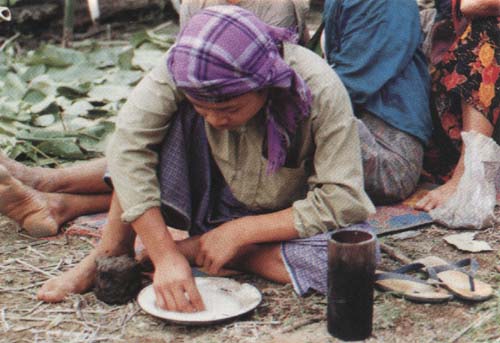 Picture 1: Food scarcity
refers to inadequate access to the necessary amount
of food as measured in real terms. Picture 1: Food scarcity
refers to inadequate access to the necessary amount
of food as measured in real terms.
|
AHRC has measured the denial of the right
to food in Burma terms of "food scarcity." This
phrase denotes the absence of sufficient food to maintain a
healthy and active life 1.
Food scarcity refers to inadequate access to the necessary
amount of food as measured in real terms: whether people
actually have food to eat. Food may be produced and sold
abundantly, but if it is too expensive or not available
locally then people will have no food on their tables. It is
the opposite of food security. Clinical malnutrition and
death from starvation may be extreme effects, but are not
required to demonstrate food scarcity. More visible are the
social symptoms: poverty, children dropping out of school to
work, crime, corruption and other communal or environmental
damage created by the desperate search for a reliable food
source.
 Rice Rice 
Any investigation into hunger must take
into account agricultural production and distribution. AHRC
has provided the Tribunal with a background to Burma’s
agricultural economy, summarized briefly below.

Picture 2: "Bad
harvests in 1966-68 resulted in short supply of
food."
|
Rice is the staple crop and staple
food, and is the commodity which determines food
security or scarcity. Burma’s agricultural
economy has weathered four eras of rice production
and distribution: feudal, colonial export,
nationalized, and post-socialist. Importantly, none
of these historical shifts tells the full story.
Because the country is politically and geographically
diverse, significant sectors of the agricultural
economy remained unaffected by these historical
changes. This is particularly true in the distinction
between lowland rice production, by which farmers
cultivate rice paddies flooded by monsoon rains, and
highland swidden agriculture, in which non-irrigated
fields are cultivated on hillsides. To generalize:
lowland cultivation provides a surplus crop to be
sold and traded; growing highland rice generally
produces a subsistence crop for local consumption.
The four eras of Burma’s agricultural economy
generally refer to changes in the production and
distribution of lowland paddy. |
| Feudal agriculture provided a
community’s food and whatever tribute was due to
the monarch or his local vassal. Generally, the
subsistence economy depended on three factors: enough
cultivable land, communal labor and a local natural
resource base to provide the necessities of life. The
"rice tax" due the royal court, its army
and small civil service was more or less of a burden
depending on proximity to the capital (or feudal
lord), total output and the specific demands placed
on a farming community. |
"Around
1960 one kilogram of rice cost 0.5 kyat. In 1966-69 it cost 28
kyat, 56 times more." |
With colonialism came the rice
export economy. Under British administration, vast areas
of lower Burma were cleared for export rice production,
and by the 1920s Burma became the foremost supplier of
rice to the world. In 1939 Burma was still the leader,
putting 3 million tons of rice on the international
market that year. Much of it was grown in the Irrawaddy Delta
and exported from Rangoon.
Under the socialist regime, which took over
in 1962, rice production was nationalized. The government
attempted to redistribute productive lands under nationally
administered, locally managed collective farming. The general
ineffectiveness of this program combined with the fertility
of Burma’s soil meant that the changes posed little
threat to food security, despite population growth from 17
million just after World War II to 24 million in 1962.
However, poor harvests in the late 1960s tested nationalized
rice production’s flexibility in a crisis:
Bad harvests in 1966-68 resulted
in short supply of food. Starvation was experienced for
the first time in the known history of Burma. Even during
the four years (1942-45) of war, food had not been
scarce. For the first time in the lives of the people of
Burma, the word famine expressed itself in real life.
Parents sold their children for some rice… Around
1960 1 kilogram of rice cost .5 kyat. In
1966-69 it cost 28 kyat, 56 times more.2
In good times and in bad, the government
was a major rice consumer. It purchased a percentage of all
rice produced at a fixed rate, regardless of most
fluctuations in the rice market. As in pre-colonial times,
the government procured rice to provision the army and sell
at a discount to civil servants. Throughout the shortages of
the 1960s, the government maintained its purchase rate of 3
kyat per kilogram, or almost one-tenth of the going market
rate.
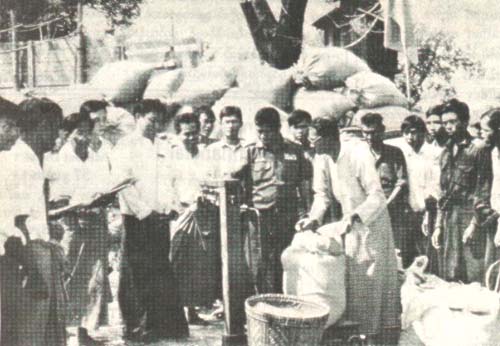
Picture 3: "The government pays little for rice
destined to bring high profits in overseas
markets."
|
Trouble in the rice market
triggered the end of the socialist-styled
agricultural economy. By 1987 another food crisis
loomed, and the government abandoned its strictest
controls on the rice market. In August 1997 rice had
risen to 15 kyat per kilogram, the highest price
since the 1960s. Fearing possible famine, in
September the government lifted the ban on
harvest-time rice trading, in place since 1962. The
market price of rice was cut in half. |
The post-socialist era has retained central
planning and control of food production. Farmers are still
required to sell a percentage of their rice to the government
at discount prices. This paddy procurement system is
implemented by Myanma Agricultural Produce Trading (MAPT), a
state agency which, along with other arms of the bureaucracy,
inherited the duty from its socialist predecessor, State
Corporation No 1. MAPT’s national structure reaches down
to the village, where it designates paddy land and collects a
fixed quota based on land area. This quota rose steadily from
1988 until 1995, when it was fixed at 12 baskets per acre in high rice-producing areas such as
Irrawaddy Division (reports of quotas set at 15 or even 18
baskets are not unknown). Around this time the government
paid one-third to one-fifth the going market price for rice
purchased under the quota system.
An inherent flaw in this system is the
government’s quota calculation based on arable land area
rather than amount of rice actually planted or harvested.
Farmers who work poor land or for other reasons produce an
imperfect crop are not exempt from the quota. They fulfil
their obligation by supplying paddy bought on the market. In
these cases, the difference between the relatively high
market price and the low government purchase rate results in
a net loss for farmers.
Households which fail to fill the quota
face a variety of consequences. While arrests and beatings
have been reported, more common is the confiscation of paddy
land, for redistribution to other farmers more likely to
produce. Farmers have also been sent to labor camps to work
off their debt. In Irrawaddy Division, local military
authorities are said to have ordered no milling of harvested
rice for consumption or trade until entire villages filled
their quotas. Lastly, farmers have been threatened, scolded
and publicly abused by government rice procurers dissatisfied
with their quota.
Quota rice is not only used to provision
the army and the civil service, but sold on the international
market. Since 1988 there has been a renewed emphasis on
agricultural production for export. The main strategies are
to increase the land area under cultivation, increase
productive capacity through a variety of irrigation and
agricultural development projects, and license commercial
ventures to grow rice for export.
| In 1994 the government announced a
major new drive to increase rice exports fourfold,
but in the first years of its plan was forced to buy
rice at market value to make up for the shortfall of MAPT-procured quota rice. The World Bank
estimates that in 1994-95 rice farmers lost about one
quarter of their gross income because of MAPT
procurement. This mass purchase of an additional 3%
of the nation’s rice over and above the quota
raised its domestic market value. Following this
experience, the government became slightly more
cautious in purchasing rice for export. In 1997
government purchase rates rose to almost one half the
market price for top-quality rice. A temporary
relaxation of the strictest aspects of the quota rule
and a reduction in land confiscation also saw the
total amount of rice procured fall by 21% in 1996-97. |
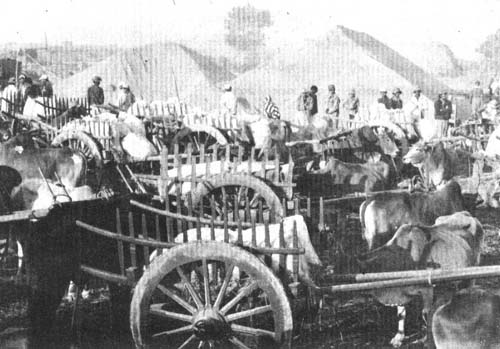
Picture 4: Corruption and quota pressures mean
sometimes farmers must sell even more paddy than
calculated.
|
The government may have accepted that its
export plans will only be realized when the total amount of
paddy produced in Burma increases to satisfy the both the
domestic market and the MAPT quota, and leaves a surplus
bound for foreign shores. In a speech to mark World Food Day
1997, Minister for Agriculture and Irrigation, Lt-Gen
Myint Aung, explained:
Being endowed with equitable
weather conditions and abundance of land and water
resources, Myanmar has made great accomplishments in the
production of food through the joint effort of the
Government and the people... A tremendous amount of
capital has been invested for the implementation of
increased food production programs. We have been engaged
[in] the development of virgin lands, expansion of
cropping areas and increasing the cropping
intensity...Food policy adopted for the country is
aim[ed] at supplying [a] sufficient amount of food for
the entire nation and at the same time to guarantee
better health and social well being of the populace. 3
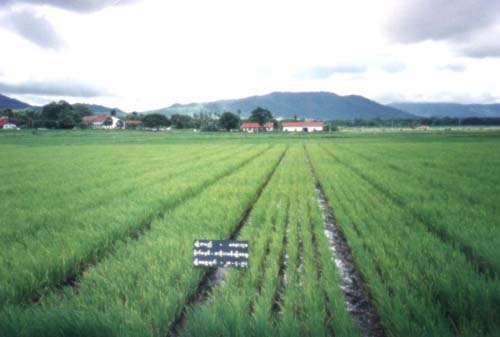
Picture 5: "They took video where the crop
looked good, where it was green and ripe."
|
The government has launched
agricultural development schemes throughout the
country, but especially in the Irrawaddy Delta. The
centerpiece is the summer paddy program, in which the
traditional single rice crop per year, sown in the
rainy season and reaped in the cool season of
October-December, is followed by another crop raised
and reaped in the hot season. The summer paddy scheme
has several elements: development of irrigation
systems such as dams and canals, introduction of high
yielding hot-season rice strains, and use of new
fertilizers, pesticides and machinery to cope with
the technical complications of the new crop. |
These tactics have created two new burdens
for farmers. The first is the labor needed to build roads,
small dams and irrigation ditches. State-directed,
uncompensated labor is common practice in Burma. Farmers who
work on these development projects have less time to tend
their crops or other subsistence activities. Secondly, the
chemical ingredients of the summer rice program are not
distributed free to poor farmers, but are sold to them.
Farmers who don’t buy the necessary materials can not
participate in the program; their unproductive land,
officially designated for double-cropping, is reassigned to a
more able household.
| The socialist-era reassign-ment of
arable land to productive farmers has taken a new
twist in the late 1990s: corporate rice farming. In
January 1999 the government announced that 200,000
acres of paddy land in the Irrawaddy, Rangoon and Magwe Divisions had been transferred to
nine unnamed entrepreneurs licensed by the government
to reclaim "wetlands and vacant, fallow and
virgin lands." It further added that "More
wetlands and vacant, fallow and virgin lands are
being reclaimed to extend cultivation to ensure rice
sufficiency for the people" in a campaign to
increase wet-season paddy land by two million acres,
and summer paddy by an additional four million. 4 |
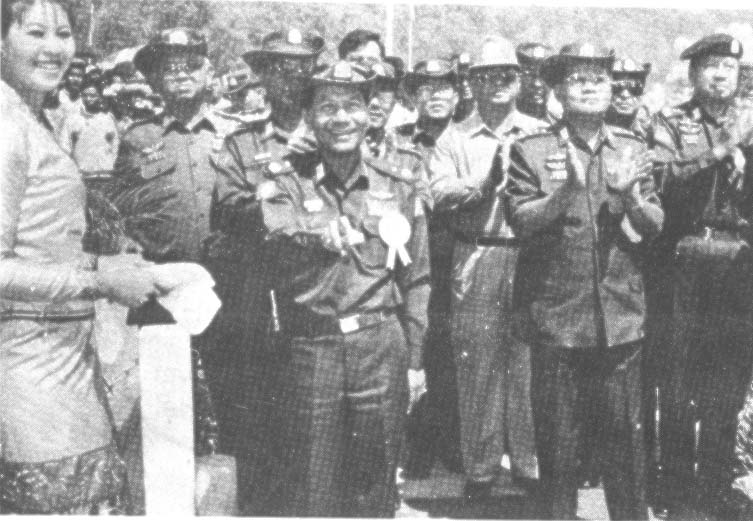
Picture 6: Development schemes never challenge the
assumption that Burma needs to recruit, feed and
equip a huge army.
|
Recent US Department of Agriculture
statistics affirm statements by the Burma government that in
1998-99 rice export once again drove national farming policy.
There was a substantial export increase in 1998; by November,
86,233 metric tons of paddy had been exported, compared to
only 15,328 for the whole of 1997. 5 These
reports coincide with rising national production targets, to
be achieved in part by contracting big parcels of land to
entrepreneurs.
| "Militarism
is distinguished as being of a more material,
physical quality…while militarization is
predominantly an ideological orientation..." |
Despite efforts to increase rice
production, independent reports indicate that in the
early 1990s, over 30% of Burma’s children were
suffering from malnutrition. Furthermore, anecdotal
reports from throughout the country confirm that many
people simply don’t have enough to eat. AHRC has
provided some of these reports to the Tribunal; most
are publicly available. Perhaps one million Burmese
refugees and migrant workers reside in neighboring
Thailand, many reporting food scarcity as their
primary reason for flight. |
 Militarization Militarization 
| The Asian Human Rights Commission
has submitted that food scarcity and hunger exist
because of militarization. In defining this term,
AHRC has distinguished between militarism and militarization,
the critical difference being the social and
ideological force the latter exerts on the normative
life of society: |
Reports
indicate that in the early 1990s, 31% of Burma’s
children were suffering from malnutrition |
Militarization
should be understood as the process whereby military
values, ideology, and patterns of behavior achieve a
dominating influence on the political, social, economic,
and external affairs of the State; and as a consequence,
the structural, ideological, and behavioral patterns of
both the society and the government are
"militarized." 6
Thus, the distinction between
militarization and militarism:
militarization…
denote[s] the spread of military values (discipline and
conformity, centralization of authority, the predominance
of hierarchical structures, etc.) into the mainstream of
national economic and socio-political life. Militarism is
distinguished as being of a more material, physical
quality…while militarization is predominantly an
ideological orientation, often leading to military
leadership of civilian organizations and institutions. 7
| So we have been presented with a
distinction between militarism as a visible
characteristic of state and militarization as a more
abstract interpretation of how those characteristics
affect the nation. From these definitions the
Tribunal understands that a degree of militarism is
already known to exist. Burma’s military
government, armed conflict and suppression of
political dissent are all facts which we recognize at
the outset. However, a large and active army, the
State’s use of violence and even military rule
are traits of militarism which can exist without
extreme pervasion of military culture and
polarization of people from the state. AHRC has
sought to establish before us that what has taken
place in Burma is not mere militarism, but
militarization in the full sense. This is the issue
we will consider. |
AHRC has sought to
establish that what has taken place in Burma is not
mere militarism, but militarization in the full sense |
 Rise of the Tatmadaw Rise of the Tatmadaw 
The AHRC has outlined Burma’s modern
political history to help define the scope of the Tribunal.
This history can be summarized as follows.
The modern nation of Burma was forged when
a variety of feudal states were consolidated by British
colonial rule. Before colonial times, there were no fixed
boundaries around a single encompassing nation or kingdom.
Instead, peoples living in and around the Irrawaddy
River basin existed under the rising and falling influence of
Burman, Mon, Shan, Arakan, Siamese and other kingdoms. Furthermore, huge
highlands were home to various peoples without large-scale
polities, especially Kachin, Chin, and Karen
peoples, as well as numerous related and unrelated groups.
Throughout the 19th century, however, England
fought a series of wars with the Burman empire in a campaign
to make Burma the easternmost province of British India. By
1890, the last Burman king went into exile, and colonial
administration was established. The eastern border with Siam
was more or less demarcated, Assam and Manipur were retained
as parts of India, and the northern and northeastern
frontiers with China roughly set. Burma was created not as a
sovereign nation, but as a colonial province of British
India.
British Burma was thus a mosaic of peoples
and places brought for the first time under a single state.
The peoples of Burma received the new regime with varying
reactions, some resisting colonialism outright and others
welcoming it as a turn in their political favor. British
interest lay in profitable export of teak and rice, and in
controlling the eastern extreme of British India. European
expansion ended with World War II and the invasion of Burma
by Japan. A group of Burman nationalists known as the Thirty
Comrades seized the war as an opportunity to oust Britain.
They established the Burma Independence Army (BIA), led by
General Aung San, which assisted Japan on the understanding
that once the British had been routed, Burma would achieve
independence. However, doubts about the sincerity or
viability of the Japanese pledge led the BIA to switch sides,
and by the end of the war Burma remained a British colony.
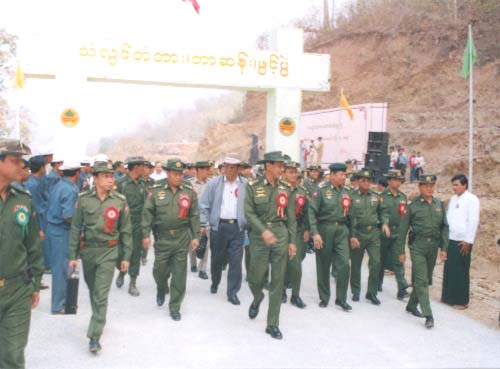
Picture 7: The Tatmadaw developed a political
identity as defender of Burma’s unity… |
World War II also crystallized
modern ethnic nationalism. Burmans saw the war as the
beginning of a drive for independence, a campaign
which was ultimately successful. Chins, Kachins and
Karens provided pivotal support to the Allies
throughout the war, raising their status within the
colonial administration and exposing them to
techniques of modern warfare. Furthermore, the
BIA’s initial cooperation with Japan entailed
retribution against those who aided the British,
including the ethnic minorities. Thus the war
created, renewed or intensified ethnic tensions
between Burmans, whose monarch had been banished and
who had been subjugated under colonial rule, and the
minorities, whose subjugation under the Burman kings
had been somewhat relieved by the British. |
When Britain granted independence to Burma
in 1948, questions over autonomy for ethnic-minority
inhabited areas remained unresolved. General Aung San, who
headed a controversial provisional government, was
assassinated along with his entire cabinet just before the
British withdrew. Within months the country was covered with
nationalist and communist movements. The Burma army, or Tatmadaw, was thus born into the role of suppressing
the disunity of a nation which had never been unified to
begin with.
Throughout the 1950s the Burma army’s
power grew steadily, while political inroads to resolving
Burma’s many conflicts were few and led nowhere. In 1958
a military-led caretaker government assumed control, led by
General Ne Win, one of the Thirty Comrades. In 1962 Ne Win
consolidated his power through a complete military coup. For
three decades of Ne Win’s rule, the Tatmadaw developed a
political identity as defender of Burma’s unity against
internal enemies. The Burma army cast itself as savior of the
nation’s integrity.
Politically, the period between 1962 and
1988 was Ne Win’s experiment with socialism. Single
party rule fell to the Burma Socialist Programme Party (BSPP),
which nationalized agriculture and industry and turned Burma
into a "closed" country. BSPP legalized itself in
1974 through a new constitution. In 1988, with Burma facing
economic ruin, Ne Win retired from his leading role in
national politics. In August many people took to the streets
calling for greater reform, invoking a harsh military
response. Thousands of demonstrators, including students and
workers, were killed or fled to the frontier areas. A junta
of hard line military officers staged a coup, reasserting the
army’s prominence. In September 1988, the State Law and
Order Restoration Council (SLORC) replaced the BSPP and its
pretensions to both socialism and quasi-civilian rule.
Despite holding a promised election in 1990, the military
refused to cede power to an elected parliament, persecuted
its rivals, especially the National League for Democracy
(NLD), and maintained tight control on all political dissent.
The 1990s saw the Tatmadaw expand, modernize, and begin to
open the nation’s economy to foreign capital.
| Insurgency continued throughout
the BSPP and SLORC eras. The Karen rebellion, which broke out
near Rangoon in 1949, gradually drifted eastward to
the Thai frontier. The Kachin Independence
Organization maintained control over the highlands in
northern Burma. Meanwhile, the adjacent Shan State
was home to ethnic nationalist movements, drug
warlords and the once-powerful Communist Party of
Burma. In 1974 the Tatmadaw expanded the "Four
Cuts," an anti-insurgency program designed to
cut civilian support for guerrillas. The brutality of
this campaign fuelled further resistance and cemented
the belief that the Tatmadaw was intent on genocide,
making total autonomy of minority peoples the only
secure political destiny. SLORC’s determination
to quash Burma’s insurgency saw a series of
political and military successes throughout the
1990s. It concluded cease-fire agreements with
several opposition groups and won significant
military victories, especially along the Thai border. |
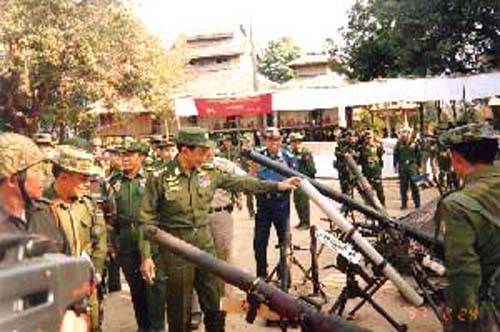
Picture 8: In 1974 the Tatmadaw expanded the
"Four Cuts."
|
| |
|
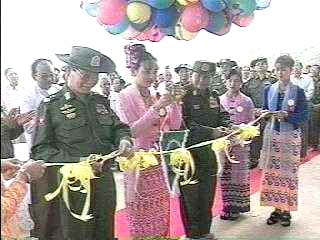
Picture 9: Throughout the 1990s the Tatmadaw grew
both in size and expenditure
|
Throughout the 1990s the Tatmadaw
grew both in size and expenditure. In 1989-90 the
army stood at 175,000 men but doubled to 350,000 in
1995-96. In the same period, the civil
service increased by only six percent. Indeed, a 1997
estimate put one in every 32 eligible people in the
military. The government’s target is 475,000
troops—larger than the US army and one of the
biggest standing armies in the world. The American
Embassy estimated defense spending to be at least
half of total government expenditure, at 8-10 % of
recorded GDP. 8
In 1988-89, the year SLORC formed, Burma spent 1.8
billion kyat on defense, constituting 22.9% of
recorded government spending, equivalent to 2.3% of
recorded GDP. By comparison, from 1993 to 1996
defense constituted about 40% of government spending.
The government reported that in 1995-96 for every
kyat spent on development in frontier areas more than
26 kyat went to the Tatmadaw. Beyond this substantial
piece of the national budget, the Tatmadaw receives
goods and services of uncalculated value: |
The Ministry of Defense receives
but does not pay for about one-fifth of Burma's centrally
generated electricity. The Defense Ministry also
purchases large amounts of fuel far below market prices.
In FY 95/96,
the Defense ministry purchased at least 12 million
gallons of fuel, at about 20 kyat per gallon for diesel
and 25 kyat per gallon for gasoline, for which the market
prices were about ten times higher. In addition, a
substantial share of the GOB's
declining real expenditures on health is said by health
industry experts to be used to provide medical services
to military personnel, and is not included in the defense
budget. The Defense Ministry also receives large amounts
of rice at a steep discount from the market price… 9
| Today, despite decades of armed
resistance, the military remains in firm control of
Burma’s political and economic scene. The
Tatmadaw has maintained its leading role in
Burma’s government, impervious to growing
international concern for human rights and political
freedom. The population, at about 45 million, has
virtually no legal options for political opposition,
although a number of illegal anti-government groups
operate throughout the country. Burma’s Tatmadaw
continues to pursue its vision of a unified,
"peaceful, modern and developed" nation led
by strong and vigilant military heroes. |

Picture 10: "They burned our houses and food
supplies and it’s plain to see that we could
never stay on there."
|
The Tribunal will consider food scarcity
and the militarization of Burmese society against this
background of a prominent and growing army. Certain political
facts are undisputed: Burma has a military government; this
government is autocratic; armed conflict exists within the
country; and civilians report that atrocities are committed
against them in the course of this conflict. Our inquiry is
to determine whether the right to food has been denied to the
people of Burma, and if so whether the military dictatorship
and the administration it controls are responsible. To make
this determination, we must evaluate AHRC’s charge that
the right to food has been denied, then judge whether there
is a nexus between this scarcity and military encroachment.
| 1 |
 |
For more discussion of food scarcity
and related terms, se FAO’s The State of Food and
Agriculture, and Bread for the World’s Eighth
Annual Report, cited in the Bibiliography (Appendix
7). |
| 2 |
 |
Shwe Lu Maung, Burma: Nationalism
and Ideology, Dhaka: University Press Ltd., 1989. pp.
56-7. |
| 3 |
 |
"More Food Being Grown to
Eradicate Hunger and Malnutrition," New Light of
Myanmar, 17 October 1997. |
| 4 |
 |
"Nineteen entrepreneur groups to
reclaim 203,000 acres in Ayeyawady Division," New
Light of Myanmar, 19 January 1999. |
| 5 |
 |
US Department of Agriculture,
"Burma's monthly rice trade and price update for
September, 1998," GAIN Report (#BM8013, 8
October 1998). |
| 6 |
 |
Churches Commission on International
Affairs, Militarism and Human Rights, Geneva:
World Council of Churches, 1982, p. 5. |
| 7 |
 |
Jim Zwick, "Militarism and
Repression in the Philippines," Working Paper
Series, Montreal: McGill University Developing Area
Studies, 1982, p. 4. |
| 8 |
 |
American Embassy Rangoon, Foreign
Economic Trends Report: Burma, 1997, September 1997,
p. 15. |
| 9 |
 |
The American Embassy’s statistics
are not official, but are a compilation of embassy,
Myanmar government and World Bank/IMF figures. The
embassy’s report outlines the flaws inherent in all
statistical data on Burma, including a general
incompleteness of all data, exchange rate distortion,
omission of defense-related imports and overstatement of
international debt service payments. |
Return
to Top
|